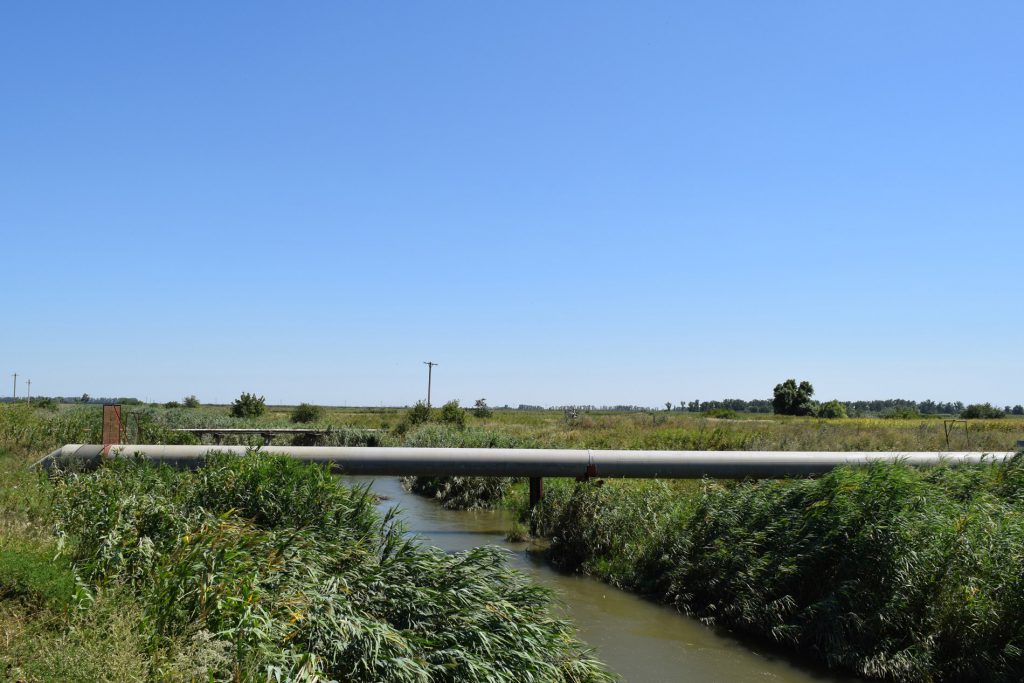May 2, 2018
HydroFlow Helped Client Save Money

HydroFlow helps pipeline operators save money by re-prioritizing unnecessary and costly inspections.
The Challenges of Water for Oil and Gas Operators
Bodies of water present unique challenges and responsibilities for a pipeline operator. The terrain of pipeline water crossings ranges from farmland to mountains and the watercourses vary from slow-moving creeks to fast-flowing rivers- all with varying depth of coverage requirements. In addition, flooding can increase the likelihood of pipeline failure due to increased exposure, or scour – resulting decreased depth of cover. Extreme weather patterns, such as those recently witnessed in North America, raise flood risk in some areas and drastically change depth of cover. Rivers and streams also change course over time, making water crossings a dynamic environment requiring diligent review and management. Operators are guided by their own pipeline integrity programs as well as federal and provincial regulations and standards in managing pipeline water crossings.
A lack of accurate information can lead to unnecessary inspections, or the wrong type of inspection, which can be costly and ineffective. There has been no easy way for the oil and gas industry to remotely monitor the thousands of water crossings they are responsible for – until now.
Real-time Abnormal Water Flow Event Monitoring
The game-changing technology monitors and automatically notifies operators of abnormal water flow events occurring near their pipelines and facilities – in real-time. The app assists pipeline integrity management teams to identify and manage water-related hazards, whether resulting from river erosion or abnormal stream flow conditions and flooding.
Easy-reference Online Maps with Flow Gauge and Asset Details
The HydroFlow app utilizes data in the form of major and minor water flows, tributaries and sub-drainages, which have been mapped by provincial and federal authorities. This data is combined with historical data, real-time water level and flow data from thousands of existing gauges at hydrometric stations. The app then spatially intersects pipeline data with water flow data, allowing clients to easily associate major or minor flows with pipeline mapping and therefore increase operational efficiency.
Case Study
Client Reviewed Previously Unknown Historical Water Level Trends
The client in this case study was a mid-size oil and gas company with hundreds of pipelines installed over three decades across the province of Alberta. The client engaged Cenozon to conduct a pilot project using Cenozon’s standalone, cloud-based app, HydroFlow.
The client was able quickly review HydroFlow’s of historical data, which showed nearly 100 years of water level trends at the gauges nearest to their pipeline water crossings. It was this historical perspective that, in this case, provided the client with information it otherwise wouldn’t have known existed. As we’ll see, water flow history was useful to the operator in deriving a more accurate risk profile for one pipeline water crossing in particular.
Defined Monthly or Seasonal Thresholds Based on Historical Data
Cenozon set up the HydroFlow mapping for the client’s pipelines within a day, allowing the client to immediately begin associating river and other water crossings with their pipelines based on pipeline license numbers. HydroFlow enabled the client to assign their own risk analysis priorities and set specific thresholds, derived from a combination of data:
• The client’s geo-hazard assessment data
• 3rd party datasets of seasonal or monthly water gauge levels including historical
abnormal flow conditions
• Geographic location
• Environmental and regulatory factors
• The age and depth (of cover) of the pipeline
HydroFlow Helped Client Identify Potentially Vulnerable Water Crossing
In this case, the water crossing ultimately identified by the client as being potentially vulnerable had been installed in 1990, and the operator had performed all required inspections, the last of which occurred in 2009. When the client reviewed the data on the HydroFlow app, they were able to see that there had been abnormally large flow occurrences on nine occasions over the last two decades with a one-in-a-hundred-year scale event in 2010, a year after the last inspection.
As a result of the HydroFlow-generated data, the client knew a geo-technical assessment was required for the water crossing in question and determined that, although it would take another one-in-a-hundred-year event to expose the pipeline, their parameters for optimal safety and efficiency require addressing this risk in the near future.
Notification if Threshold Exceeded
Upon review of HydroFlow’s data and its own geographical assessment relating to the vulnerable water crossing, the client was able to set their thresholds for that crossing to ensure a pro-active and preventative response before another potentially significant occurrence of abnormal water flow. If conditions for that crossing exceed the specified acceptable range, client will receive an automatic notification, enabling the operator’s integrity and safety teams to quickly assess the situation and dispatch appropriate resources when and where they are required.
Better Understanding of Risk = Cost Savings
HydroFlow was developed as part of Cenozon’s existing Geo-Hazards Module within its Pipeline Integrity Risk (PIRM) Software, and it easily integrates with third-party databases. The app provides valuable information for the assessment of risk by operators through a user friendly interface as well as delivering the confidence of knowing pipeline water crossings are being monitored on a timely basis. Real-time data streams provide operators with the information to determine when an inspection is required, what level of inspection is required, and ultimately when a costly inspection or geotechnical assessment may be unnecessary. HydroFlow makes it easier for oil and gas operators to obtain the right data and effectively achieve optimal operational efficiency, safety and compliance.
